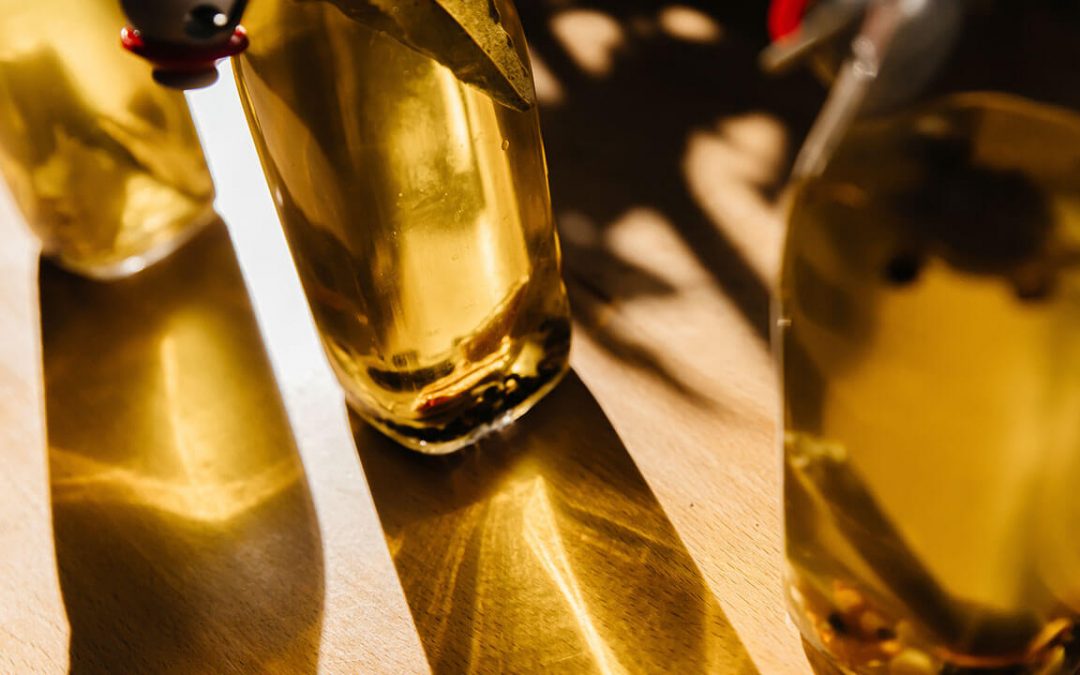
Whether it’s as a condiment or a means to preserve food, vinegar is part and parcel of the Filipino culinary culture. No respectable Filipino kitchen would be caught without a bottle of the sour sauce. More often than not, pantries are probably stocked with more than one kind because each has its particular character and use. Let’s break down the most well-loved types.
Palm vinegar
This archipelago is crawling with palm trees, so it’s not a huge surprise that several regional varieties of vinegar are extracted from this prolific flora. A general term for palm vinegar is sukang tuba. Because it’s laborious and time-consuming to make, this vinegar has somewhat become a dying art. There are three kinds of palm vinegar.
Nipa palm vinegar
Five-year-old nipa palm trees are tapped by bending the stalks and slicing off the fruit bunch. A bamboo tube collects the sap, which is then transferred into earthen jars where it ferments for a few weeks. Fresh nipa palm vinegar usually comes in a hazy white hue, but it reddens the longer it’s kept. The flavor is distinctly sweeter with a slightly salty tinge. The sourness, however, intensifies over time.
- Local terms for nipa palm vinegar are sukang sasa, sukang nipa, sukang Paombong (Bulacan)
- On its own, thissuka is best with strongly flavored dishes to add more dimension and contrast in taste, like chicharon and dried fish. It’s also used for paksiw and atsara.
Kaong palm vinegar
Kaong palms have to be 10 to 15 years old before they could be harvested for vinegar. The process is similar to the nipa palm variety, but with sugar palm (kaong—particularly the sap of male inflorescences—instead. It’s left in the tapayan jars to ferment for about a month. Kaong palm vinegar leans towards the sweeter side of the spectrum.
- Also known assukang irok
- Because of its sweet flavor,kaong vinegar is usually added to drinks.
Coconut vinegar
Perhaps the most common of all the palm vinegars, the coconut variety comes from either fermented coconut water or sap. The color can range from clear and cloudy to yellow and orange. The flavor is unabashedly sharp.
- When people saysukang tuba, they’re usually referring to coconut vinegar—though the term encompasses the wider palm vinegar index.
- The famous Sukang Pinakurat vinegar falls under this category. Pinakurat is a trademarked brand (and not a type of vinegar as most people assume) by Iligan-based entrepreneur Rene Jose B. Stuart del Rosario who came up with the recipe after his heart surgery cost him nearly all of his savings.
- Its piercing sourness makes it ideal forkinilaw. It’s also the base for popular sawsawan, sinamak.
Cane vinegar
The accessibility of sugar cane, as well as its high production yield makes cane vinegar a much more popular choice than its palm counterpart. It also lends itself well to mass production. There are numerous ways to make cane vinegar.
Sukang maasim
This variant comes from fermenting sugar cane sap. Many commercial vinegar products are sukhang maasim. Adopted mostly for the infinitely famous adobo, the flavor of sukang maasim ironically leans towards the softer side.
Sukang Iloco
Though both kinds of cane vinegar hail from Ilocos, this particular variety is derived from basi, a local wine. Basi is made by boiling sugarcane juice, which is then sealed inside tapayan jars where it ferments for many years. Basi then undergoes another period of fermentation to become vinegar. The final product ranges from dark yellow to brown, with a rounded flavor that finds the middle ground between sweet and sour.
- Also known assukang basi or in the alternatively spelled sukang Iloko
- It works great on Ilocano products likelongganisa and empanada!
Apart from the better-known palm and cane vinegar, Filipino artisans also use other ingredients as a vinegar base, such as pineapple, mango, banana, and more.


Recent Comments